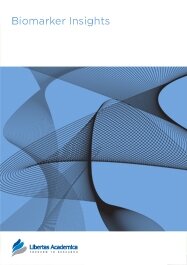

Publication Date: 19 May 2013
Type: Original Research
Journal: Biomarker Insights
Citation: Biomarker Insights 2013:8 53-67
doi: 10.4137/BMI.S11102

To determine the influence of exercise on pulmonary dose of inhaled pollutants, we compared biomarkers of inhaled ozone (O3) dose and toxic effect between exercise levels in humans, and between humans and rats. Resting human subjects were exposed to labeled O3 (18O3, 0.4 ppm, for 2 hours) and alveolar O3 dose measured as the concentration of excess 18O in cells and extracellular material of nasal, bronchial, and bronchoalveolar lavage fluid (BALF). We related O3 dose to effects (changes in BALF protein, LDH, IL-6, and antioxidant substances) measurable in the BALF. A parallel study of resting subjects examined lung function (FEV1) changes following O3. Subjects exposed while resting had 18O concentrations in BALF cells that were 1/5th of those of exercising subjects and directly proportional to the amount of O3 breathed during exposure. Quantitative measures of alveolar O3 dose and toxicity that were observed previously in exercising subjects were greatly reduced or non-observable in O3 exposed resting subjects. Resting rats and resting humans were found to have a similar alveolar O3 dose.
PDF (666.16 KB PDF FORMAT)
RIS citation (ENDNOTE, REFERENCE MANAGER, PROCITE, REFWORKS)
BibTex citation (BIBDESK, LATEX)
XML
PMC HTML

I would like to extend my gratitude for creating the next generation of a scientific journal -- the science journal of tomorrow. The entire process bespoke of exceptional efficiency, celerity, professionalism, competency, and service.
Facebook Google+ Twitter
Pinterest Tumblr YouTube